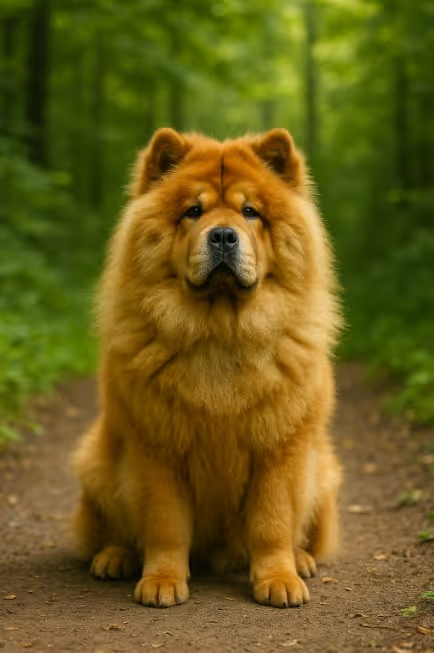The Chow Chow is a dignified, cat-like Asian spitz/guardian known for its lion’s ruff, scowling expression, and blue-black tongue. Calm and reserved with strangers but deeply devoted to family, Chows do best in structured homes that value neutrality training, early socialization, and steady routines. If you’re wondering “Are Chow Chows good apartment dogs?”—yes, for owners who meet exercise and grooming needs and manage barking. “Do Chow Chows shed?”—yes, heavily during seasonal coat blows. “Are Chow Chows hypoallergenic?”—no.

An ancient Chinese breed used as a multi-purpose homestead dog—guardian, draft helper, and hunter—the Chow Chow appears in art and records spanning centuries. The breed reached Britain in the 1800s and later North America, prized for its aloof nobility and striking coat. Modern Chows retain their self-possessed temperament, sturdy build, and distinctive blue-black tongue, a hallmark shared with only a few other breeds.
A compact, square, powerful spitz with small triangular ears and a high-set tail carried over the back.
Impressive coat = consistent maintenance—especially during seasonal sheds.
Moderate body work with strong management for heat.
Independent, intelligent, and handler-sensitive—clarity and fairness matter.
Keep lean to protect joints and skin.
Choose breeders who screen and disclose; work with a vet familiar with the breed.
Temperament, health screens, and lifelong support are key.
Are Chow Chows good apartment dogs?
Yes—if you provide 45–60 minutes of daily exercise, enrichment, and consistent training.
Do Chow Chows shed a lot?
Yes. Moderate normally and heavy seasonally—line-brush and de-shed tools help.
Are Chow Chows hypoallergenic?
No. They are not hypoallergenic.
Do Chow Chows drool?
Usually low to moderate—more after drinking or heat; keep a towel handy.
How much exercise does a Chow Chow need?
About 45–60 minutes daily plus short training sessions or nose games.
Rough vs Smooth coat—what’s different?
Rough: longer, profuse ruff/pants, more grooming. Smooth: shorter/denser, easier upkeep—both double-coated and shed.
Are Chow Chows aggressive?
They’re naturally reserved/guardy, not inherently aggressive. Early socialization, neutrality training, and clear management are essential.
Do Chow Chows have eye problems?
Entropion is relatively common. Work with your vet; some dogs need corrective surgery to protect the cornea.
How do I keep a Chow safe in summer?
Exercise at cool hours, provide shade/water, avoid hot cars/sidewalks, and watch for overheating; never shave the double coat.
What health tests should breeders do?
Hips/elbows, CAER eyes, and thyroid panel; ask to see documentation and discuss skin/temperament history.